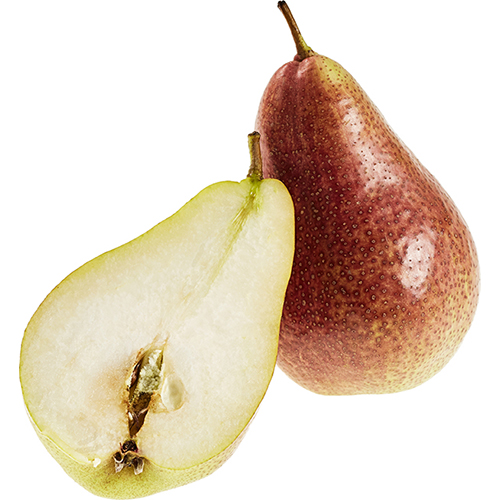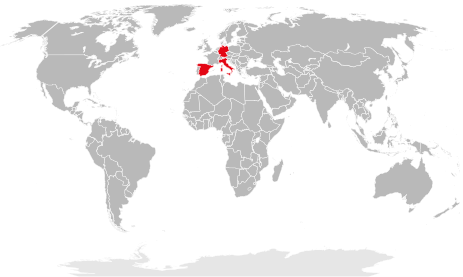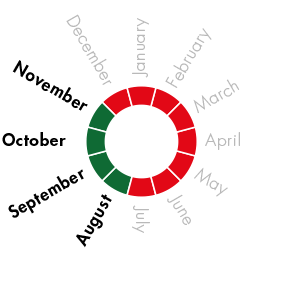Pear





Ripe pears have an especially sweet and fruity taste
Very low in fat
A single portion provides 18% of the recommended daily intake of fibre
Excellent source of calcium, which has a vasodilatory effect
Ripe pears have an especially sweet and fruity taste
Very low in fat
A single portion provides 18% of the recommended daily intake of fibre
Excellent source of calcium, which has a vasodilatory effect
Origin
Germany
Spain
Italy

Harvest time

Fillings




Information
There’s more to pears than meets the eye – there are summer, autumn and winter pears, dessert pears, cider pears (for juice production) and cooking pears (for compote). And then there is a type of dessert pear which has a particularly delicate skin, also known as a butter pear. Like apples, pears also belong to the Malinae subtribe within the rose family (Rosaceae).
Pears originate – so we believe – from Caucasus and Anatolia. Today, they are grown in both the northern and southern hemispheres - provided it is warm and the soil is full of nutrients. The main cultivation areas – in addition to China (c. 40% of global production) – are Italy, the USA, Spain, Argentina, Japan, Turkey, France, Ukraine, Chile, South Africa and also Germany.
Pears originate – so we believe – from Caucasus and Anatolia. Today, they are grown in both the northern and southern hemispheres - provided it is warm and the soil is full of nutrients. The main cultivation areas – in addition to China (c. 40% of global production) – are Italy, the USA, Spain, Argentina, Japan, Turkey, France, Ukraine, Chile, South Africa and also Germany.
Good to know
- Pears have one of the highest fibre contents of all fruits, at an average of 6 grams per pear. As a reference: the human body requires between 25-30 grams of fibre each day.
- Pears are easy to digest and are good for children and anyone with a sensitivity to acidic foods
- The benefit of pears? They make you feel sated quickly.
Quality
- Bio
- Conventional
